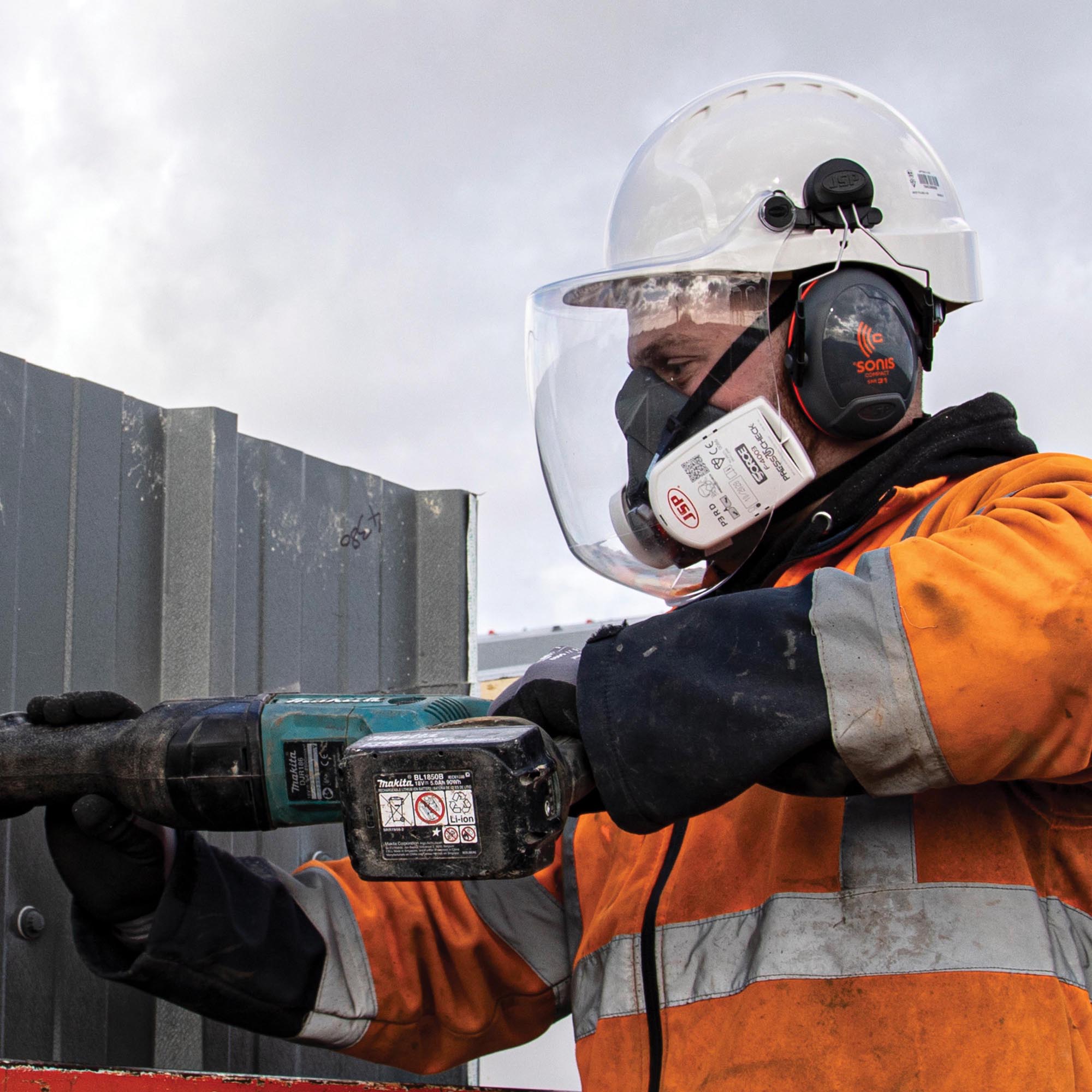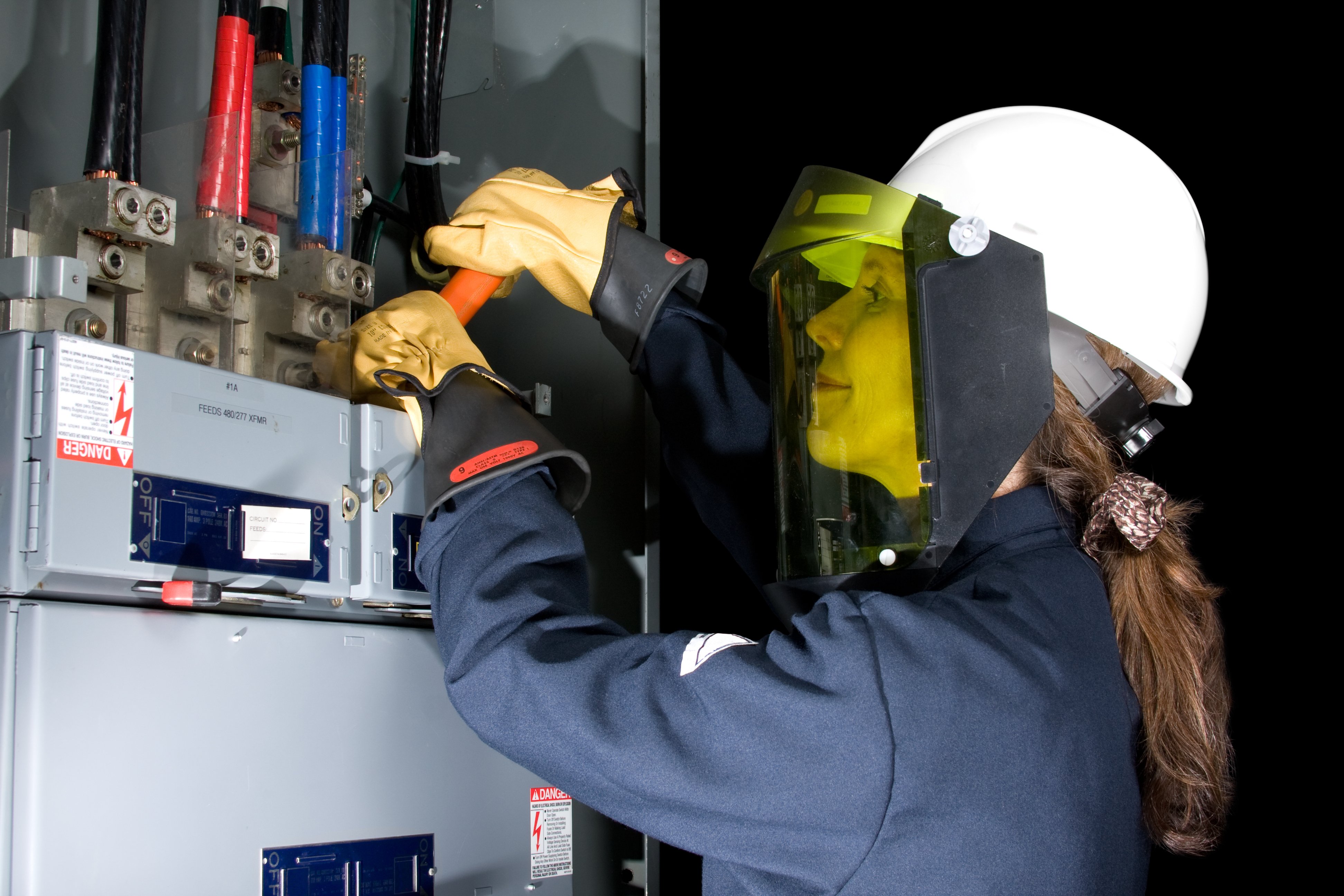What is the difference between inherent and treated flame retardant fabrics?
By Daryl Michel
As the Strategic Client Manager here at Lion Safety, I help our customers find the right safety gear to keep their people safe. When discussing fabric choices for FRAS and Arc Protection, this is one of the most common questions I get asked. Maybe you want to know why there is such a difference in price or which fabric offers better value. Maybe you’re wondering whether inherent offers more protection than treated. Maybe you’re just a curious soul, who fell down the technical fabric rabbit hole and has, consequently, found yourself on this post. Regardless, welcome; you’re about to learn how inherent FR fabric is different from treated FR fabric, and why people choose one or the other.
A quick key:
FR – flame retardant/ flame resistant
AS – anti-static
The main difference is about how the fabric is flame retardant. But which fabric will keep my staff safest? Which fabric will be the best value? The best way to navigate these questions is to look at;
a) the properties of the fabric (or composition)
b) the cost
c) the industry you work in
By the end of this article, you will:
- Understand the difference between the two types of FR fabrics and their uses
- Learn the industries that fit best with each type of fabric
- Know which one is better suited to your requirements
Treated Flame Retardant Fabrics
Treated fabrics are often made of cotton, polyester, nylon mix, plus an anti-static element. But these fabrics should burn easily right? While they would ordinarily burst into flames quite quickly, treated fabrics undergo a (you guessed it), chemical treating process that changes their properties. Once treated, when coming into contact with flame or spark, the fibres self-extinguish to protect the wearer.
Treated fabrics must undergo strict testing to ensure they are safe for consumers. ISO standards determine how many washes a garment can endure and be verified safe. A common wash limit is 50 washes, meaning that the garment is verified fire retardant for up to 50 washes, but not beyond that point.
Treated FR fabrics are great options for lots of reasons, and the most popular is cost.
The Cost of Treated FR Fabrics
That’s right, treated FR fabric garments usually cost less than inherent ones.
For example, an orange coverall that is treated (C/BS3100OR – ProGARM 3100), would have a price of £89 (if buying more than 5, there will be a discount). For comparison, its inherent counterpart (C/BS6100OR – ProGARM 6100) would cost £220 (as above, if buying more than 5, there will be a discount).
Why? Because treated FR fabrics undergo a process after they are woven that gives them flame-resistant properties. Treating the garment after it is made means that manufacturers can use readily available and relatively inexpensive fabric (like cotton). This keeps the overall cost of the garment down.
This can make treated FR fabrics an easier go-to option for people who have constrictive budgets, and those looking to supply PPE for shorter contract lengths.
Treated garments are more economical for clients under specific requirements, such as:
- temporary staff,
- industries where the garment would require less frequent laundering, and
- short term projects with smaller budgets.
Good-Fit Industries for Treated Fabrics
While there is no ‘ideal’ industry for treated or even inherent fabrics, there are industries that are more likely to want an expendable option.
The industries that I see consistently purchasing treated garments over inherent ones are:
- Construction and other industries that have shorter projects where garments may are treated as disposable.
- Welding and fabrication. With the high chance of metal splash and sparks, any FR garment will likely be subject to burns, therefore an FR treated fabric is more cost-effective based on the lifespan and application.
- Fuel industry. High staff turnover means that garments are likely to need replacing regularly. As a result, clients look for a more cost-effective solution.
It is always good to remember that the quality of treated garments is less suitable for long term use. Ensuring compliance becomes complicated when using treated garments, as you can’t determine how many times the garment has been washed.
Pros and Cons of Treated Fabrics
The biggest pro of working with treated FR fabric is that it’s budget-friendly.
The biggest con, which, depending on your project, may outweigh the pro, is that it has a much smaller lifetime than inherent FR fabrics.
Inherent Flame Retardant Fabrics
Inherent FR fabrics are made with synthetic fibres, such as aramid, mod-acrylic and FR viscose. These are “intrinsically flame retardant”, which means that they don’t ignite in our regular atmospheric conditions. Unlike treated FR fabrics, no amount of washing will alter those properties. Frequent laundering of these products won’t result in loss of flame retardancy.
While treated fabrics hold the edge on price, inherent fabrics make up for this in durability.
The Cost of Inherent FR Fabrics
Inherent fabrics cost more, but have more flame retardant integrity and could last for years. Because of this, it is good to weigh up cost versus use.
For example, consider an inherent garment that costs £50 and you will wear it every day for a 2-year project, versus a treated garment that costs £25 that you will need to replace every 3 months. In this scenario, you would need to replace the treated garment 4 times in a year and 8 times over the project, bringing the cost for that piece of kit alone to £200. So, why pay for 8 of the same item when you could have a piece of kit last the entirety of a project at a quarter of the price?
Of course, the maths here is for example purposes only, but you get the point.
While the initial cost of an inherent garment is more expensive, it can be more cost-effective if you are on a longer-term project, or if the wash limit on a treated garment dictates that the garment has a shorter life cycle than the project does.
Good-Fit Industries for Inherent Fabrics
The industries I see that are more inclined to purchase an inherent FR fabric garment are:
- Power distribution. Inherent garments are predominantly used in this industry because clients tend to go for arc protection garments. Typically, the operatives are in their roles for longer, so longevity is taken into consideration when choosing this type of garment. Inherent garments are typically more aesthetically and ergonomically pleasing, meaning higher wearer comfort (and yes, enjoyment too).
- Telecoms. As with power distribution, this industry has a risk of arc flash. Therefore Telecoms often opt for better quality fabrics. The risk here is more related to the potential cable strike as opposed to arc flash from cable jointing or direct involvement with electrical hazards.
- Civils and road. This industry typically opts for higher quality garments for the operatives who are breaking ground, because there is a high risk of a cable strike resulting in an arc flash. To achieve maximum protection, clients buy inherent garments as it reduces the necessity to monitor the number of times a garment is washed.
- Rail. This industry is similar to civils and road industries. However, achieving a high vis RIS-TOM approved arc flash garment is incredibly complex and therefore inherent fabrics are used because retaining hi-vis in a high cotton content fabric isn’t always possible.
From experience, I’ve found that people in these industries go for inherent fabrics for two reasons:
- They are providing PPE for staff who are:
- in full-time positions
- on long-term projects, meaning they require the clothing for at least 80% of their work time and will need it for the foreseeable future.
- They view purchasing PPE for these staff as an investment and not an additional cost annoyance. They don’t want to go for the cheapest item even if it means replacing it many times. We often see clients who would rather fork out now for a garment that will be a more durable, comfortable and better value overall.
Similar to treated fabrics, there isn’t necessarily an industry that inherent FR fabric garments are made to be targeted for, it depends a lot more on budget, project type and length, and, ultimately, how important a priority durability, comfort and value are to key decision-makers in your company.
Pros and Cons of Inherent FR Fabrics
Inherent FR fabric can be a great investment that will last a long time. Because of this, it is often better value for money for clients that require frequent use of FR PPE.
The biggest con of inherent FR fabric products is that they are more expensive, which means that some clients can have a harder time convincing procurement teams or decision-makers to invest in this type of product.
Why purchase inherent FR fabrics when treated ones are being made to last longer?
This is another question I get asked a lot, and the points explored above still apply here.
A great example of this is, as above, the FRAS coverall by ProGARM (3100). This product is made with treated fabrics. As part of the certification process, it is washed 100 times and then tested to ensure compliance. The coverall is verified to last up to 100 washes. This is a big step forward in treated garments because it provides more flexibility when looking at the most economically viable products.
Even with the 3100 coverall lasting for more washes, there’s still a challenge around ensuring compliance when you are unaware (or unable to monitor) how many times it has been washed.
Again, this comes down to your personal preference, project length, and frequency of use of the garment. If you have regular staff needing the same PPE permanently, it is much better value to work with inherent fabric, as you don’t have to replace it as often.
If you are on a shorter project or have short staff contracts, treated may be a better fit for budgets, project length and frequency of use.
Is inherent or treated better for me?
Ah, the million-dollar question that I’ll answer with some questions for you to ask yourself:
- What environment is the PPE going to be used in?
- What industry are you in?
Here’s a more in-depth look at what you need to consider:
Environment
Surfaces
- What type of surfaces will the wearer come into contact with? E.g. abrasive, which will mean more wear and tear for the garment.
Hazards
- What type of hazards will the wearer encounter?
- Is there a lot of water?
- Is there a risk of static buildup?
- Is there potential for an arc flash?
- Are there fuel vapours?
- Is there a risk of explosion?
Nearby Equipment
- Is there equipment nearby with sharp edges that may tear a garment?
Ergonomics
- Does the environment mean that the wearer will be moving a lot?
- Is there sufficient room within the garment to move?
- Does the garment need to have articulated joint areas (knees and elbows)?
- Does the garment have a hood?
- Are pockets easy to access and reach?
- When bending is there enough movement in the garment or should you consider stretch panels?
Typically, inherent garments are made with better quality fabrics which means you’ve got more options around durability. With treated fabrics, there are fewer options in terms of flexibilities around weight, the strength of the fabric and whether or not it’s rip-stop.
If you want extra functionality for the above, you will have to look towards an inherent garment because manufacturers know the benefits that a better-made garment can offer. Therefore, they don’t tend to make this type of garment out of treated fabric, as it wouldn’t be cost-effective for a garment that may be treated as disposable.
Industry
Welding and fabrication
Typically in this environment, the garments are going to experience damage and heavy wear and tear. Therefore, it’s normal to opt for a treated fabric because of the cost benefits. However, there are manufacturers (such as Alsico) who offer very high specification garments made from inherent fabrics for working with molten metals and alloys. These garments are typically used in foundries and metal construction.
Power distribution
In this industry, workers are looking for comfort and ergonomics and companies are looking for better cost in use. Therefore, they choose inherent fabrics as the cost in use per day is typically less.
Civils
Important considerations for this industry would include; how long workers are likely to be on the job:
- is it a long term contract or not,?
- do the benefits provided in inherent garments outweigh the potentially higher cost of a garment if the contract is cut short or ends sooner.
In any industry, even if staff turnover is high, investing for the employee’s sake is a positive step. Our clients often find that higher-quality garments make their employees feel more valued, and in turn, they stay longer.
The difference between inherent and treated FR fabrics
At a fundamental level, the difference between them is clear: they are, at their very fibres, different. Because of this, their composition is different, which means that how they work to protect the wearer is different. Despite all of those differences, they both have great qualities:
- Inherent fabrics will last you a long time if you look after them
- Treated fabrics are much more pocket-friendly, if you’re not going to need the garment for long (for example due to shorter contracts)
- Inherent fabrics are more cost-effective for long-term posts and projects
- Treated fabrics are being made to last longer now and are a great option for those unsure of either camp
Which is better for you? As determined above, there is no right answer to this, there are just better and worse fits for your staff.
If you’ve opted to use treated garments, it’s important to ensure you have a process for monitoring the lifespan of the garment through the number of washes. Finally, if you are unsure, always check the labels of the garment, check the manufacturer’s specification and ask for help.
How do I buy inherent and treated fabrics?
As we established above, it’s very important to give this debate sufficient consideration before purchasing. It can seem daunting, but don’t worry – you’re already familiar with the types of fabrics, now you just need to find which is best for you. This might involve some internal discussions around cost and use, but these conversations will be worth it when it comes to buying because you will be more informed before you press ‘buy’.
But, if you’re ready to take things to the next level, or if you want to discuss buying options, here’s what you can do:
- If you have any questions, book a meeting with me to discuss FRAS and Arc flash protection.
- If you’re ready to go further and want to enquire about what we can do for your FRAS and Arc protection needs, schedule a call to find out more.

Daryl Michel
Strategic Account Manager
Email: Daryl.Michel@lionsafety.co.uk

